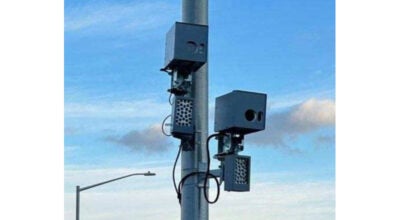Happy ending needed on Route 460
Published 10:22 am Wednesday, April 22, 2015
Last Wednesday, the McAuliffe administration began to close the book on the long, dark story of the greatest boondoggle of former Gov. Bob McDonnell’s time in public office.
With the announcement that the commonwealth would seek to terminate the contract it holds with US 460 Mobility Partners for construction of a new Route 460 from Suffolk to Petersburg, the story of the road McDonnell tried to force on Virginia comes to an unsatisfying end.
It’s unsatisfying, because taxpayers have already doled out $250 million in payments to the company and because there is still a plan circulating in Richmond to build an even-less-useful 17-mile segment between Suffolk and Zuni.
There is still an epilogue to this story to be written. Virginia officials will now enter mediation with the company to attempt to get back a portion of that money, which company officials say represents startup and mobilization costs. It’s likely mediation will prove just as unsatisfactory to the commonwealth, and the whole matter finally could wind up in court, where it’s anybody’s guess how a judge might rule.
On the one hand, not a shovelful of dirt has been turned in support of the project. On the other hand, the contract apparently allowed such large advance payments, and transportation officials raised no objections to the payments until after it became clear that McDonnell’s strategy of trying to force the project over the objections of the U.S. Army Corps of Engineers had failed.
When the last page of this book is written, it’s unlikely to include a happy ending for Virginia taxpayers.
But Gov. Terry McAuliffe’s announcement Wednesday regarding the contract termination also promised a sequel would be coming. Transportation officials seem intent on pursuing the 17-mile version of the new road, even over the objections of those who will be displaced in Windsor and even though there’s no clear evidence the new version of Route 460 will do anything to accomplish the original objectives: to provide a reliable and safe evacuation corridor for Hampton Roads, to give truck traffic a clear route to I-95 and to improve the safety of the Suffolk-Petersburg corridor.
The sequel to the Route 460 saga could be much darker for the people of Windsor, and it would be costly to Virginia taxpayers. But for those hoping for a little light in the darkness of this series, there is some hope.
A new step has been added to the funding process for highway projects since the original Route 460 idea was floated. The Commonwealth Transportation Board must now examine new projects and give them a place in a list of transportation priorities.
That new process is likely to be fraught with political considerations, opportunities for public input and chances for the project to be derailed completely. Route 460 will not stand on its own during the process — it will have to be weighed against many other projects across Virginia with stalwart defenders ready to argue that their needs are more pressing.
The second installment of this series could be just as dark as the first, and folks in Southeastern Virginia could be left just as unsatisfied with its conclusion as they have been with the first installment. But at least there’s now hope that the authors of this sequel will recognize the need for a happy ending.




